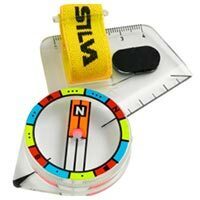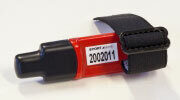Orienteering Equipment
- Home >
- Information >
- Newcomers >
- Orienteering Equipment
We thought it would be helpful to put a list of equipment together – you don’t need much!
Thumb Compass – comes in right hand and left hand versions, enable you to easily navigate from control to control whilst holding the map in the same hand. But you can always use a traditional compass.
Description Sheet holder (attached to your arm) enables you to check the control as you run. A nice to have, but not essential as you can read the controls on the map, (but you may need to unfold the map).
Dibber to collect electronic times from controls which is downloaded at the end of the event – you can normally hire this. There are 2 main systems used: Sport-Ident and EMIT, of which Sport-Ident is the most popular (and is used by GO for our own events). Sport-Ident has 2 flavours: SIAC is contactless and is getting more popular (but more expensive), SI is simpler (doesn’t have a battery) but requires physical contact with the control.
Gaiters, saves ripping your Ron Hill’s if you’re running though brambles or worse!
Whistle, often a requirement at events just in case you need to summon help in case of accident.
Guide to Control Descriptions – you really need to learn this!
Guide to orienteering map symbols – again needs to be learnt, fairly obvious if you’re used to OS maps except that white means easily runnable forest not open land (which is denoted by brown) and olive green means “out of bounds”.
Pacing – not strictly equipment but if navigating using pace-counting its useful to know how many double paces equate to 50m (will be more uphill / walking).

